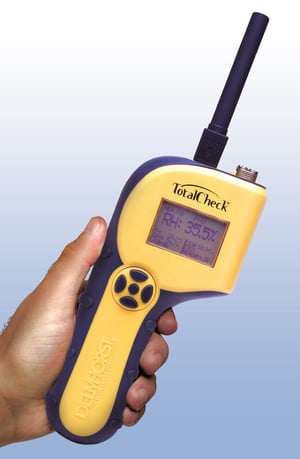 A complete building inspection is a painstaking process that requires the inspector to be both accurate and thorough. Any missed issues in the structure—such as leaks, damaged flooring, mold, or pest infestations—can create complaints or even damage the inspector’s reputation.
A complete building inspection is a painstaking process that requires the inspector to be both accurate and thorough. Any missed issues in the structure—such as leaks, damaged flooring, mold, or pest infestations—can create complaints or even damage the inspector’s reputation.
Because trust is so hard to rebuild once broken, it is absolutely vital that professionals verify their building inspections with wood moisture meters. These devices can help inspectors quickly find moisture-related issues in a structure, such as moisture intrusion sources or pockets of hidden moisture in floors or walls.
Here are a few tips for using a moisture meter for wood to verify building inspection results:
1: Picking a Moisture Meter
Wood moisture meters come in two general varieties:
- Pin Meters. These devices use the principle of electrical resistance to measure the amount of wood is present in wood. Two electrodes are pushed into wood, and an electrical current is passed between them. Since wood is a natural insulator, and water is a conductor, the more resistance there is, the drier the wood.
- Pinless Meters. These devices use electromagnetic frequencies to “scan” wood for the presence of moisture. The electromagnetic wave is measured for fluctuations to establish how much moisture is present.
Each of these meter types have their own strengths and drawbacks. For example, pinless meters are able to scan large areas all at once, while pin-type meters are restricted to measuring moisture between the two pins. However, this makes pin-type meters more precise for determining how deep a moisture pocket is, once found.
Also, pinless meters can take moisture measurements in wood without having to penetrate the surface of the wood—whereas pin-type meters will leave pinholes at the testing site.
Many building inspectors use both types of meters in their work or even use 2-in-1 meters that combine the two kinds of meter into a single device. 2-in-1 devices like the TechCheck PLUS meter are great for building inspectors who want to get the best of both worlds while saving a little space on their tool belt.
2: Quickly Finding Moisture Pockets and Intrusion Sources
There’s a fairly easy procedure that building inspectors can use to quickly cover large areas of a building in the search for moisture pockets. This procedure involves the use of both pin and pinless moisture meters.
First, building inspectors use the pinless meter to quickly scan large, flat areas of the structure—such as floors, walls, ceilings, wooden beams, and so on. Then, they use the pin meter for determining moisture pocket depth or to get readings in uneven surfaces where pinless meters don’t work as well.
By following moisture readings throughout a structure, building inspectors can trace the moisture back to a specific intrusion source or determine the extent of the damage and how it should affect the appraised value of the structure.
3: Recording Measurement Results
For any professional, documentation is vital. After taking moisture content measurements in any given room of a structure, the readings should be carefully recorded—preferably in a manner traceable to each individual room. Annotating a room name/number to each moisture measurement increases the accuracy of the data and makes it easier to sort any issues for a later report.
Some moisture meters can actually store a certain number of readings automatically to make recording measurements easier. This way, users don’t have to stop and record a number each and every time they take a reading. Some meters, like the TotalCheck, can store up to 1,400 readings and sort them by job/room for easy reference. By connecting the meter to a computer, these stored readings can be exported into an Excel® report for easy printing and sharing.
4: Other Devices to Consider Using
In some very large structures, going over every inch of every single room with even a pinless moisture meter for wood isn’t very practical. In these structures, it can be a good idea to use a thermo-hygrometer to monitor the relative humidity (RH) of a large area all at once.
If the relative humidity measurement of one area of the structure is significantly higher than the rest, then that could be an indication that there’s excess moisture somewhere in that area. This is useful for narrowing the search area for moisture pockets or intrusion sources in bigger buildings.
Do you have the tools you need to verify your building inspections are as accurate and thorough as possible? Find out more about how to use wood moisture meters for building inspection today!

Comments